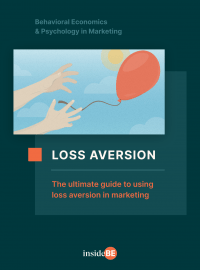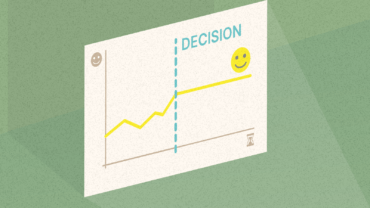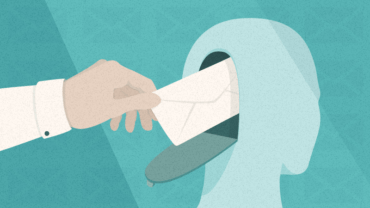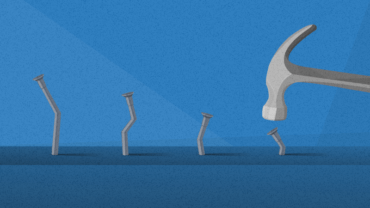3 Clever Ways to Leverage the Endowment Effect Online
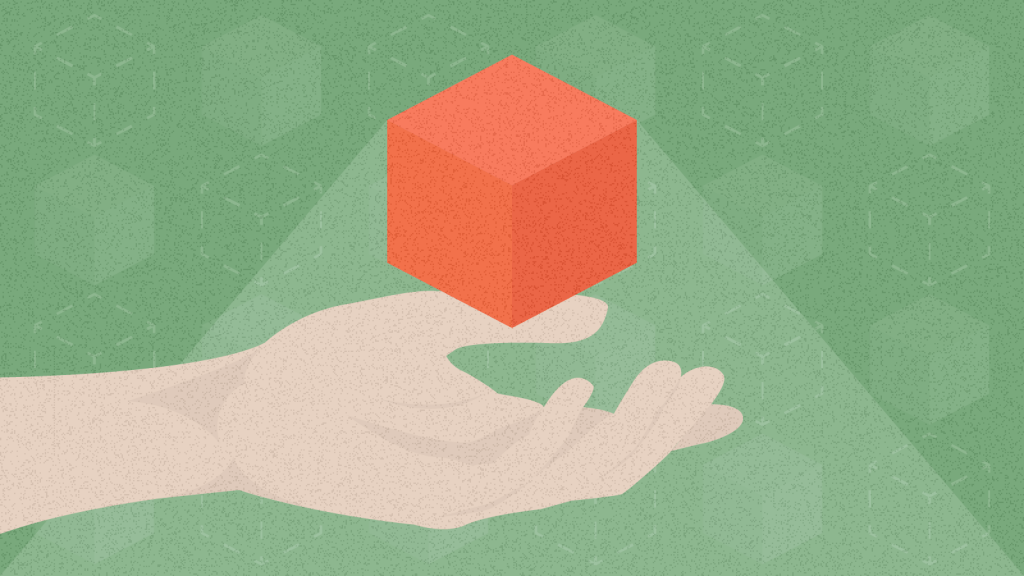
It’s said that “the things we own end up owning us”. It’s true – we tend to attribute a much higher value to the things we own simply because they are ours. But did you know you can easily evoke this feeling of possession in your customers? They’ll then see even greater value in your product and won’t want to let it go. We’ll show you how.
In this article, you´ll discover:
- How and why the endowment effect works
- How even the idea of possession can make your product seem more valuable in customers’ eyes
- 3 different ways to make use of this in an online environment
We all get sentimental from time to time, but the sentiment kicks in hard when it comes to material things. Just think about the 40-year-old car that has sat in your grandpa’s garage for the last 10 years that he just won’t give it up. Or even closer to home – that t-shirt from your teenage years with your favorite band on it, with more holes than Swiss cheese. We just can’t let these things go.
Why? Because they’re ours. We feel a sense of ownership and possession. Not only do we not want to give up things that we own, but we attribute more value to them. This is called the endowment effect and it can play a huge part in marketing campaigns and sales.

Discover ground-breaking ideas and fascinating solutions.
But how can you give your customers something before they buy, so they will feel they own it and then value it even more? A classic example is the freemium model – providing your customers with an introductory month or so of free service before they take that final step to actually buy. But it’s not always that easy or even possible. You always can’t just go around giving people free stuff (if you can, please stop by our office 😉 ). Now, here’s the trick…
Even just the feeling of ownership can be enough
The thing is, people don’t have to actually own something for the feeling of ownership to be triggered. Imagine you walk into a shop to buy a new TV. A shop assistant will probably come up to you and say “How can I help you?”. The usual, almost automatic answer is, “Thanks, I’m just looking.”
Just the idea of possession can create the endowment effect. Make your customers imagine what it would be like to own your product
But what if the shop assistant used a different strategy? What if he said: “Hey, that’s a great TV. What do you think you’d enjoy watching on it most?” Suddenly, you’d find yourself imagining what it would be like if you owned it. You could finally watch football and see every detail. You’d probably invite a few friends over, have some beers, and have a great time. You love the idea. And surprisingly, it’s then hard to let it go.
Just the idea of possession can create the endowment effect. Make your customers imagine what it would be like to own your product – how it will feel and what they can use it for.
This is also partially why shop assistants in brick-and-mortar clothes shops try really hard to make you try that new dress on and look at yourself in the mirror. Customers can feel the fabric, they can imagine themselves wearing the clothes on several different occasions, and they even start to feel excited about it. Letting it go is painful.
We hate losing things in general
The endowment effect is based on one of the most powerful behavioral principles out there – loss aversion.
It was first described in Kahneman and Tversky’s study in the late 1970s. To put it simply, it says that we hate experiencing losses approximately twice as much as we like gains. In other words, you would be twice as sad if you lost 50€ as you would be happy if you found the same amount.
This loss aversion paves the way for the endowment effect. As we hate losing things, we attribute more value to them to compensate for their loss. For example, Carmon and Ariely famously showed that people who won tickets for a basketball game were willing to sell them for much higher prices ($2,400 on average) than others were willing to buy them for ($175 on average). The tickets were worth so much more to them once they owned them.
Now you know the magic behind the endowment effect, what are the 3 promised ways to create this feeling of ownership in your customers online?
1. Let the customers feel like the discount is already theirs
You can use the endowment effect fairly easily when offering customers discounts – a simple change in wording is often enough. Uber is a great example.
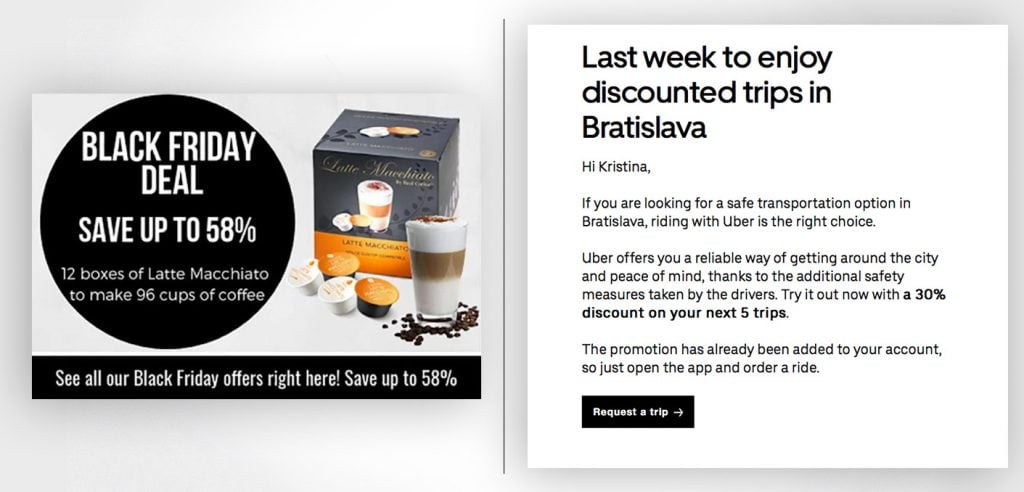
Imagine the usual way companies approach customers with discounts. It’s always the same old story – buy this and you can have it cheaper, like this Black Friday Deal from Real Coffee.
And that’s something Uber could do – they could have simply offered my colleague Kristina a discount with a phrase like – You can save up to 30%! But they approached her with a different message.
Do you see what they did with the last sentence? The promotion was already hers, so it would be a shame not to use it, right? So yes, she took the Uber. She felt like she owned the discount and not using it would mean losing it.
When you offer your customers a discount or any other benefits, frame it as if it’s already theirs and all the customer needs to do is to use or activate it. It also helps when the customers really see it’s there – a coupon in a mobile app, for example. They will feel that if they don’t use it, it will go to waste.
When you offer your customers a discount or any other benefits, frame it as if it’s already theirs and all the customer needs to do is to use or activate it.
Another great example of the endowment effect is described by Ned Welsch from McKinsey. An Italian telco company offered customers who wanted to cancel their service 100 free calls, saying something along the lines of “If you stay, we’ll give you 100 free calls”.. But it didn’t work. So they changed the wording a little and said to customers: “We have already credited your account with 100 calls – how could you use those?” If they quit the service, they would lose those calls. And so, the retention rate went up.
2. Always let the customers try the product first
It’s easier said than done if you are an online marketer. Let’s take a look at Warby Parker, an online eyewear retailer. They came up with an innovative way to leverage the endowment effect – they encourage the potential customers to order up to 5 frames to try at home.
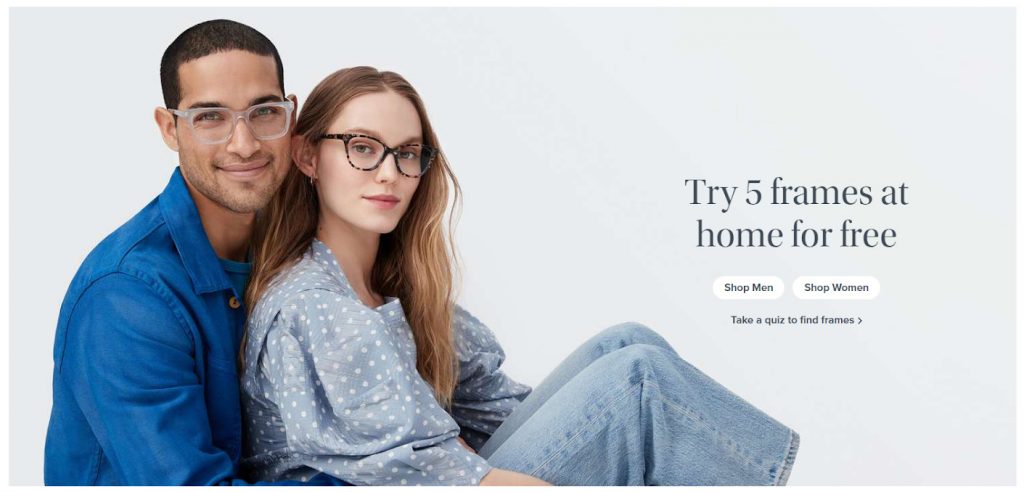
Besides removing the fear that the glasses wouldn’t fit, they wanted customers to try them on and see themselves in the mirror. They will then imagine how it would feel to own them – how they would look with their favorite outfit, how they would make them look smarter in presentations, or how they could embrace the nerdy look they’ve always wanted to rock.
Suddenly, they’re hooked and value the glasses even more. If you can, always let the customer try your product first. Once the customers know what it’s like to use it on a daily basis, they will feel the value and won’t want to let it go.
3. Let customers imagine what it’s like to own your product
When providing a service online, it might not be clear to customers exactly what it is they will end up getting. Without that knowledge, it can be quite problematic to use the endowment effect. That’s why you need to put the idea in their heads and make them imagine as vividly as possible what life with your product would look like.
Take Airbnb. Let’s say you’re a homeowner and you’re about to leave the country for a while – why should you rent your place? What’s in it for you? This can be difficult to imagine if you have never done it before.
Airbnb took up this challenge very well and told homeowners exactly what amount they could earn:
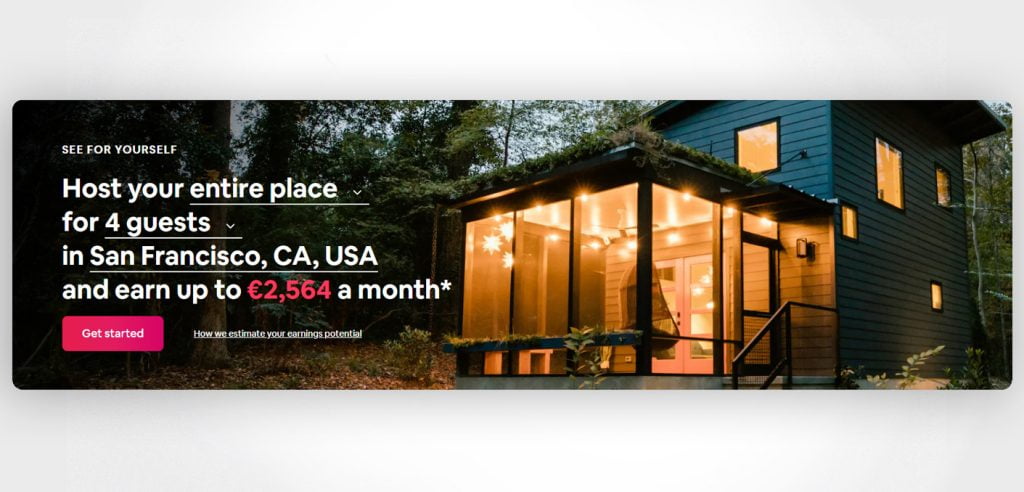
They put a very specific idea in people’s heads, and boy is it easy to envision what to do with almost $2600!
Actually, Airbnb could push it to an even higher level if they asked the homeowners 1 or 2 well-aimed questions.
“How would you use an extra 2,564 USD?”
Asking questions can be a great way to trigger customers’ imagination. Then it can really run wild.
So, what is the benefit your customers will get and how can they use it? Don’t wait for them to come up with the idea themselves, show them. If they see what they can have, it will be hard to imagine not having it.
Key Takeaways:
- Even the idea of ownership is enough to create the endowment effect. Make your customers visualize what it would be like to own your product. They will have a hard time letting go of the idea.
- Let the customer try your product/service first. Once they can try it first hand, use it on a daily basis and see all its benefits, it will be much harder for them to let it go.
- Show your customers that it’s already theirs and all they need to do is to use it. Whether it’s a coupon or other benefit, when it’s already theirs, they will feel it’s a shame not to use it.
- Give the customer a specific idea of how to use the benefit. The clearer the idea, the easier it is to start to imagine what they could do with the product, so the feeling of possession gets stronger
- Ask your customers questions. It will trigger their imagination and the feeling of ownership will be even stronger.

